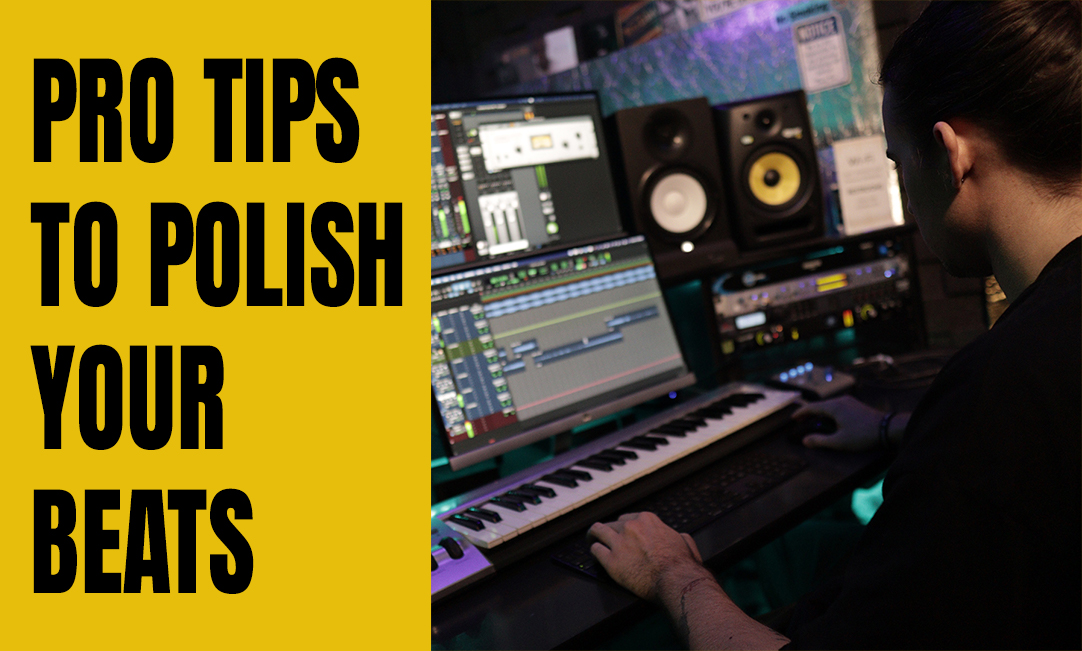Mastering & Mixing: Pro Tips for Polishing Your Tracks to Professional Quality

Date: 11-May-23
Polishing your tracks to a professional quality is an important part of music production. It is what distinguishes the amateur from the professional ones. However, getting that polished sound can be difficult, especially for aspiring music artists. In this blog, we'll share some pro tips for polishing your tracks to professional quality.Six pro tips to polish your tracks to professional quality
- Tuning equipment
Purchase good monitoring speakers and headphones. This will allow you to hear your music more accurately with no coloration of sound, allowing you to make more informed mastering decisions. You'll also need key detection plug-ins to help you tune your music to ensure it's in key. Key detection is usually included with basic mixing software, which you can buy or download for free. Tuning is crucial for mastering your music and creating a polished sound. Professional mixing and mastering service providers use advanced tuning equipment to get great sound.
- Know the Compression Basics
Dynamic range, or the difference between loud and soft parts in a song, is reduced through compression. This is done in order to balance out overall volume levels and produce a more consistent listening experience. When used properly, compression enhances your tracks' clarity and punch and also preserves their natural dynamics. For you to master your music, you must learn the fundamentals of compression. Some of these fundamentals are provided below.
Threshold: The primary parameter used to control how much compression is applied to your track is called the threshold. You can choose which sounds will be compressed and by how much by adjusting the threshold.
Attack/Release: Two additional parameters for regulating compressor behavior are attack and release. When the signal crosses the threshold, the attack controls how quickly the compressor begins to compress, and the release controls how quickly the compressor ceases to compress.
Ratio: Another parameter for controlling compressor behavior is the ratio. It establishes the amount by which a signal is diminished when it exceeds the threshold.
If you are still unable to achieve the desired result, take help from professional mixing and mastering service providers.
- Use Stereo Imaging
A mastering technique called stereo imaging aims to produce the most accurate and realistic soundstage possible. This entails adjusting the levels of various frequencies, giving some sounds more width or depth, and making other minor balance adjustments. It takes a trained ear, but it can completely change the sound of your music. These are easily done through professional mixing and mastering services.
Making use of stereo imaging will enable you to create a mix that is unique from the competition. While it's important to master tracks by ear, you can also use plug-ins to further enhance the sound of your track, such as stereo imaging tools.
- Train Your Ear
Spend time training your ear to identify and adjust different sonic elements. It is one of the best mastering tips and can be done through practice, by listening to other recordings with a critical ear, and by experimenting with various techniques. As time passes and you gain more experience, you'll be able to identify the tracks that need adjustment and make the required adjustments. However, for beginners, it is wise to use professional mixing and mastering service to polish your tracks.
- Add Reverb and Delay
In some circumstances, it might be advantageous to give certain parts of your track some reverb or delay. This is especially true if the original recording was made in an area with little to no reverberation in the natural environment. A richer overall sound can be produced by just a little bit of ambiance addition. Reverb and delay can also be used creatively to give certain sounds more depth or interest. However, like professional and mastering service providers, you must use these tools sparingly in order to avoid mixing and overly altering the sound of your music.
- Limiting
When audio signal peaks reach a certain threshold level, the process of limiting is used to reduce those peaks by applying maximum gain reduction. Limiting is frequently used to boost a track's overall volume as well as to get rid of distortion and unwanted peaks that might have been added during recording or mixing. This method can help to ensure that the audio does not clip or distort when being played back, making it particularly helpful for digital recordings. By giving both the high and low-end frequencies clarity and definition, limiting can, when done right, improve the overall sound of a track.
Since you have applied fundamental compression, stereo imaging, and other mastering techniques to polish your tracks it is now time to apply the finishing touches. This entails checking that all of the levels are balanced, modifying EQ curves to eliminate unwanted frequency content, and critically listening back to ensure that everything sounds perfect. With these final steps, you can make sure that your music has a professional sound much similar to those obtained through professional mixing and mastering services. Be sure it will reach its target audience effectively. You can produce high-caliber tracks that stand out from the competition by taking the time to comprehend and put these tips into practice.
Conclusion
UNION Recording Studio, the professional recording studio in LA, offers aspiring artists several music-producing services. We offer professional and mastering mixing services to polish your tracks and make them sound professional. Our Grammy-nominated sound engineers use the latest equipment for the purpose. So if you are struggling to polish your tracks, we are here to help you.